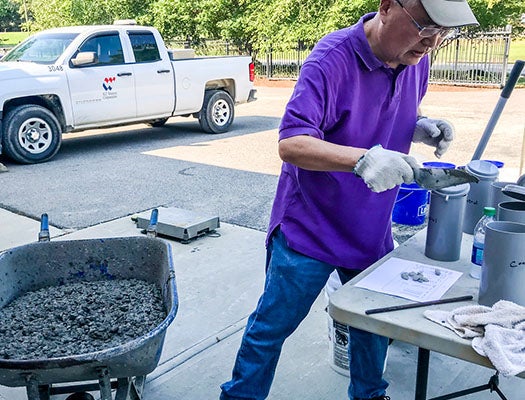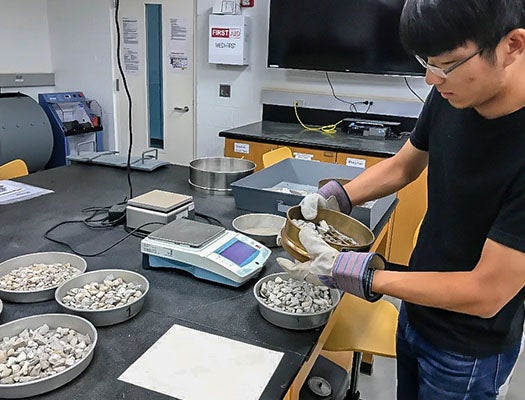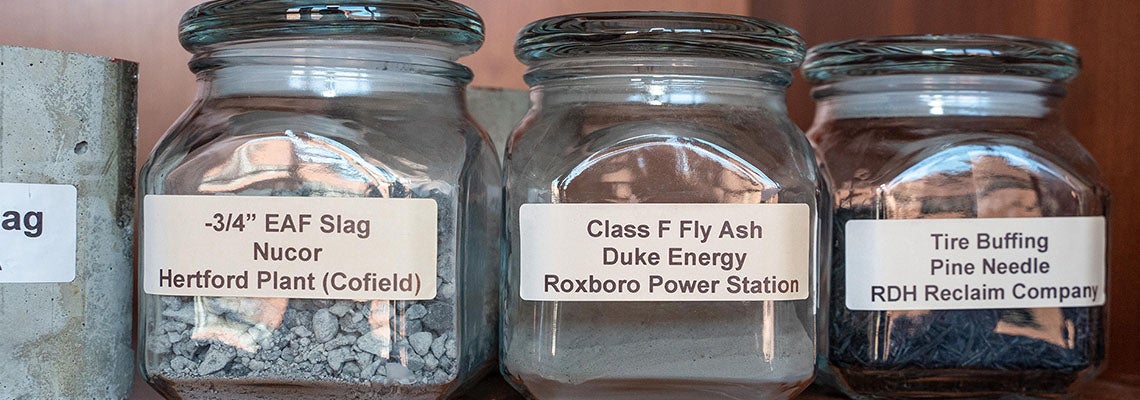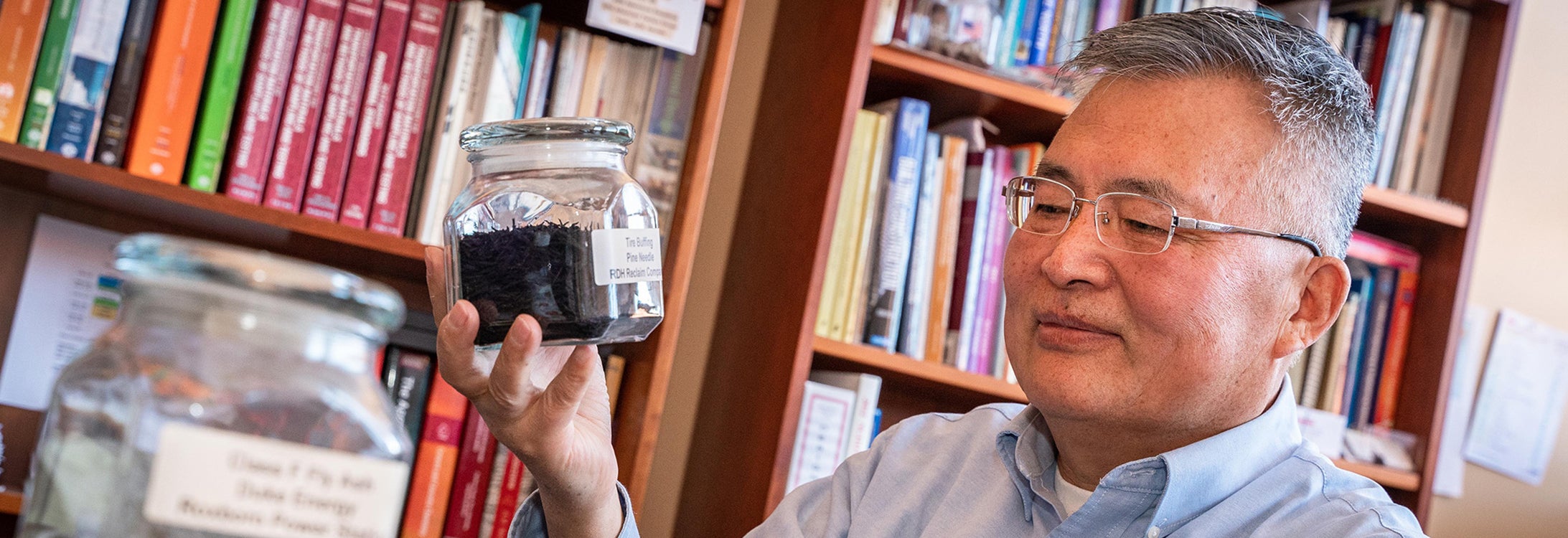CONCRETE SOLUTIONS
Project tests concrete mixes using recycled materials
An East Carolina University construction management professor and a local construction company have teamed up in search of a solution to a problem facing the North Carolina Department of Transportation (NCDOT).
The NCDOT’s State Transportation Improvement Plan identifies approximately 100 bridges and more than 700 miles of roadways in eastern North Carolina’s 28 counties that need to be rebuilt within the next 10 years.

The project tested concrete samples composed of varying ratios of recycled aggregate and slag. (Contributed photo)
“That means a lot of concrete will be used,” said Dr. George Wang. “And this area has a lack of quality aggregate, the crushed stone used for infrastructure.”
Concrete is a composite material — a mixture of fine and coarse aggregate bonded with cement. In some cases, he said, contractors drive to quarries 100 miles west to get the material they need. That means time, fuel, emissions, and wear and tear on vehicles and roadways, so the NCDOT was interested in researching alternative formulations for concrete that would be more sustainable.
“The use of recycled concrete is not a new concept for the industry,” said Brian Hunter, state laboratory operations manager for NCDOT’s Materials and Tests Unit. “The recycled concrete will be crushed down to meet certain gradations and used as a portion of the aggregate in the mix. Using the recycled concrete aggregate will help to conserve valuable resources, reduce air pollution from the production of and transportation of natural aggregate, and reduce the amount of material going to landfills.”
Some states — currently about 10, Wang said — already allow the use of recycled aggregate (old concrete) to make new concrete.
Before the NCDOT can follow suit and start to use the material in structural applications, “research must be done to determine any negative effects that may be caused,” Hunter said. “They also need to determine how feasible it will be to maintain enough stockpiles of quality material.”
Wang submitted a research proposal in 2015 and was awarded the project in 2016.
Since then, with assistance from industry partner S.T. Wooten Corporation, he has been testing concrete composed of varying ratios of recycled aggregate and steel slag, a byproduct of steel production.

Hang Ding, a master’s student in software engineering, assisted with the project, including the literature search, data analysis, and field and lab testing. (Contributed photo)
The testing was labor intensive, with large amounts of material that had to be crushed and screened, and then cast into cylinders with varying compositions for physical and chemical testing. Wang was there in person when an aging bridge was demolished.
“We crushed the material and removed the rebar reinforcement,” Wang said. “Then we brought it to the lab to sieve it and separate the fine and coarse material.”
The new mixes were tested for strength, brittleness and slump (a measure of the consistency and workability of freshly made concrete), as well as for contamination and leeching. Further testing for long-term strength was conducted at seven-, 28- and 90-day intervals.
“The results are very good,” Wang said. “Blending those recycled materials together makes a better-quality material.”
Graduate student Hang Ding was invaluable to the project, as was the participation of S.T. Wooten and the use of its concrete lab in Garner. The industry partnership allowed access to equipment and materials that Wang said he wouldn’t have had otherwise.
“It’s important for us as faculty to collaborate with industry. It’s good for the students’ education and for faculty research,” Wang said.
Robert Poole, quality control manager for S.T. Wooten, said, “It’s a win-win for everyone involved when an industry opens its doors to help the local universities. [It] helps students understand and apply the information they are gaining from the classroom.”
The final report on the project has now been submitted to the NCDOT, and Wang said he is optimistic that the agency will update its specifications to allow the use of the recycled material, providing a new solution for a significant problem facing the state in its effort to maintain and upgrade bridges, roadways and other infrastructure.

Wang has conducted research on potential uses for a variety of byproducts and recycled materials. (Photo by Cliff Hollis)
